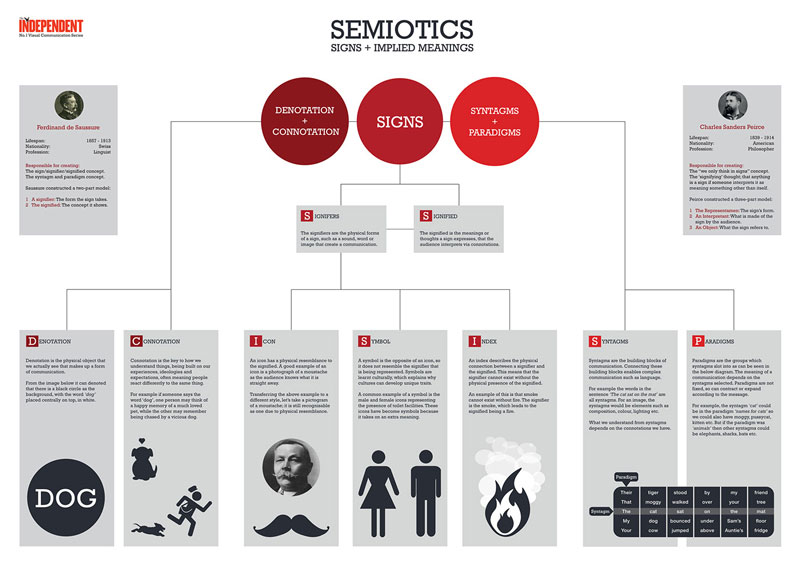SEMIOTICS
CULTURE
COMMUNICATION
ΣΗΜΕΙΩΤΙΚΗ
ΠΟΛΙΤΙΣΜΟΣ
ΕΠΙΚΟΙΝΩΝΙΑ
ΣΗΜΕΙΩΤΙΚΗ
ΠΟΛΙΤΙΣΜΟΣ
ΕΠΙΚΟΙΝΩΝΙΑ

In order to obtain the Master’s degree, postgraduate students must attend and successfully pass eight (8) semester courses. Courses are divided into compulsory and elective.
• In the 1st semester of studies, postgraduate students attend one (1) compulsory and three (3) elective courses.
• In the 2nd semester, postgraduate students attend one (1) compulsory and three (3) elective courses.
• In the 3rd semester, postgraduate students are engaged in writing their Master's thesis (Diploma Thesis).

1st Semester - Obligatory Course
The course aims to introduce students to basic concepts of semiotics and culture. More specifically, consideration is given to:
- The model of language, the notion of text in semiotics
- The typology of the sign (icon, index, symbol) and the concept of infinite semiosis (C.-S. Peirce)
- The notions of denotation and connotation, the mythologies, the notion of synergy of semiotic systems (R. Barthes)
- The concept of code (U. Eco, R. Barthes)
- The concept of Semantic Isotopies, the Semiotic Square and Binary Oposition (A.J. Greimas)
- The concepts of intertextuality and intersemiosis (J. Kristeva, R. Jakobson, S. Petrilli, P. Torop)
- Contribution by E. Cassirer and "Cultural Semiotics"
- The Semiosphere and Modeling Systems (J. Lotman)
- Culture as a structure: Myth, Mythologies (C. Levi-Strauss), Low and High Culture (E. Hall)
- The transition from Culture as Text (Humanities) to Culture as Action/Performance (Geertz)
- The role of the reader (S. Hall, U. Eco)
Detailed course presentation:
https://qa.auth.gr/el/class/1/600180761/M1

2nd Semester- Obligatory Course
Taught by: Despina Constantinidou

3rd Semester - Master Dissertation
The master dissertation is written in the Greek language but it could also be written in a foreign language, if permission is granted by the Special Interdepartmental Committee (EDE). The length of the dissertation is approximately 16,000 words, excluding appendices, notes, bibliography, tables, etc, in a Times New Roman font, size 12 pt and line spacing 1.5.
The dissertation is submitted to the three members of the evaluation committee and to the Secretariat in print or digital format.
The evaluation of the dissertation is completed within a three months period of time upon its submission.
The supervisor and two members evaluate individually the dissertation and all grades are notified to the Secretariat. The final grade of the dissertation is the numerical average of the three different evaluations.
ELECTIVE COURSES
The course will be articulated in three parts: The first part (sessions 1-3) will examine historical and methodological issues of both semiotics and art history, relying mainly on the traditions of Aby Warburg and Μeyer Shapiro on the one hand, Ferdinand de Saussure and Algirdas-Julien Greimas on the other. The second part (sessions 4-8) will present the uses of semiotic tools by art historians and “image scientists” (Rosalind Krauss, Stephen Bann, Mieke Bal, Klaus Sachs-Hombach et al.), while the third part will tackle the larger scale of cultural semiotics, as well as the history of media and the “semiosphere” in the era of mass communication.
Taught by: Lia Yoka, Panagiotis Mpikas
Detailed course presentation:
https://qa.auth.gr/el/class/1/600123662



